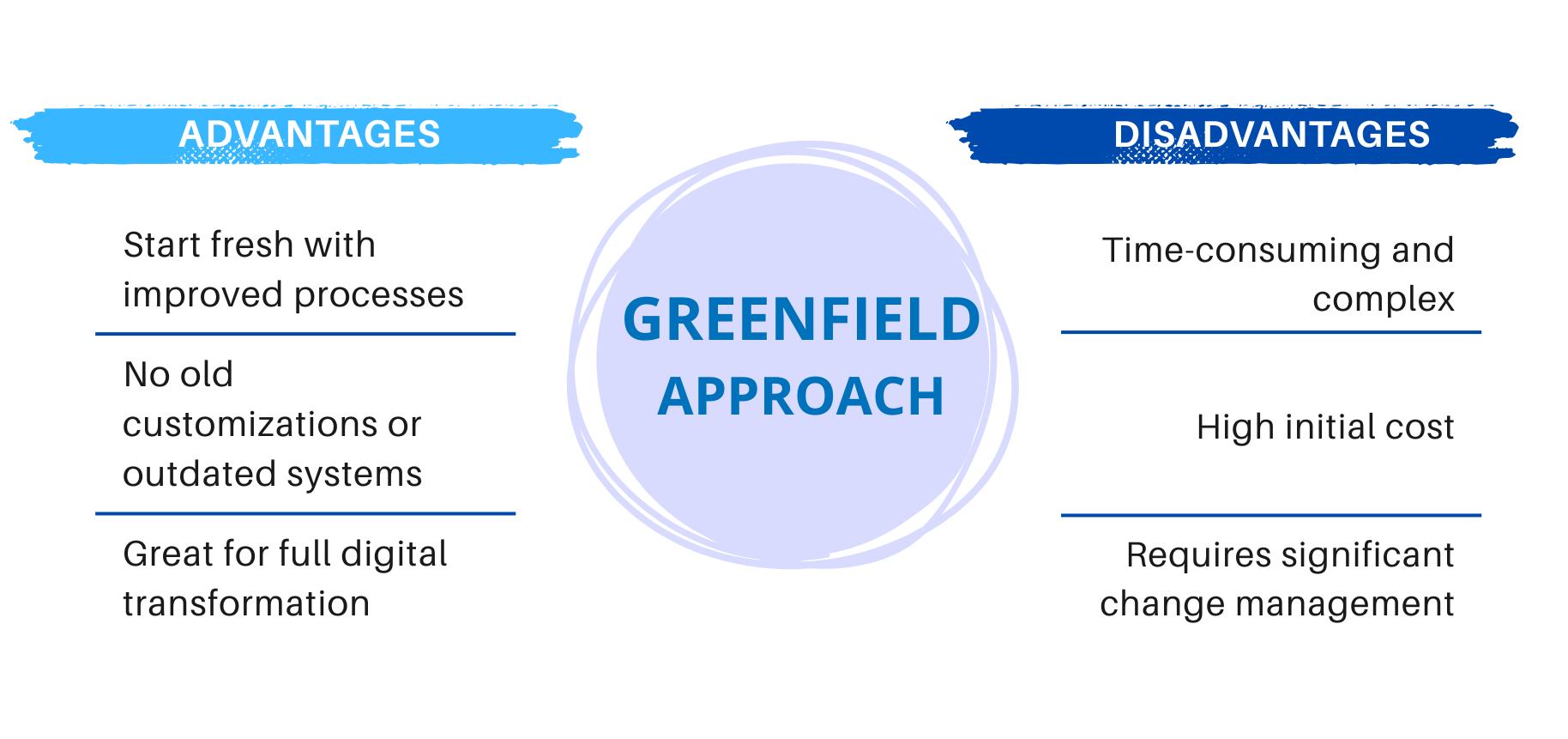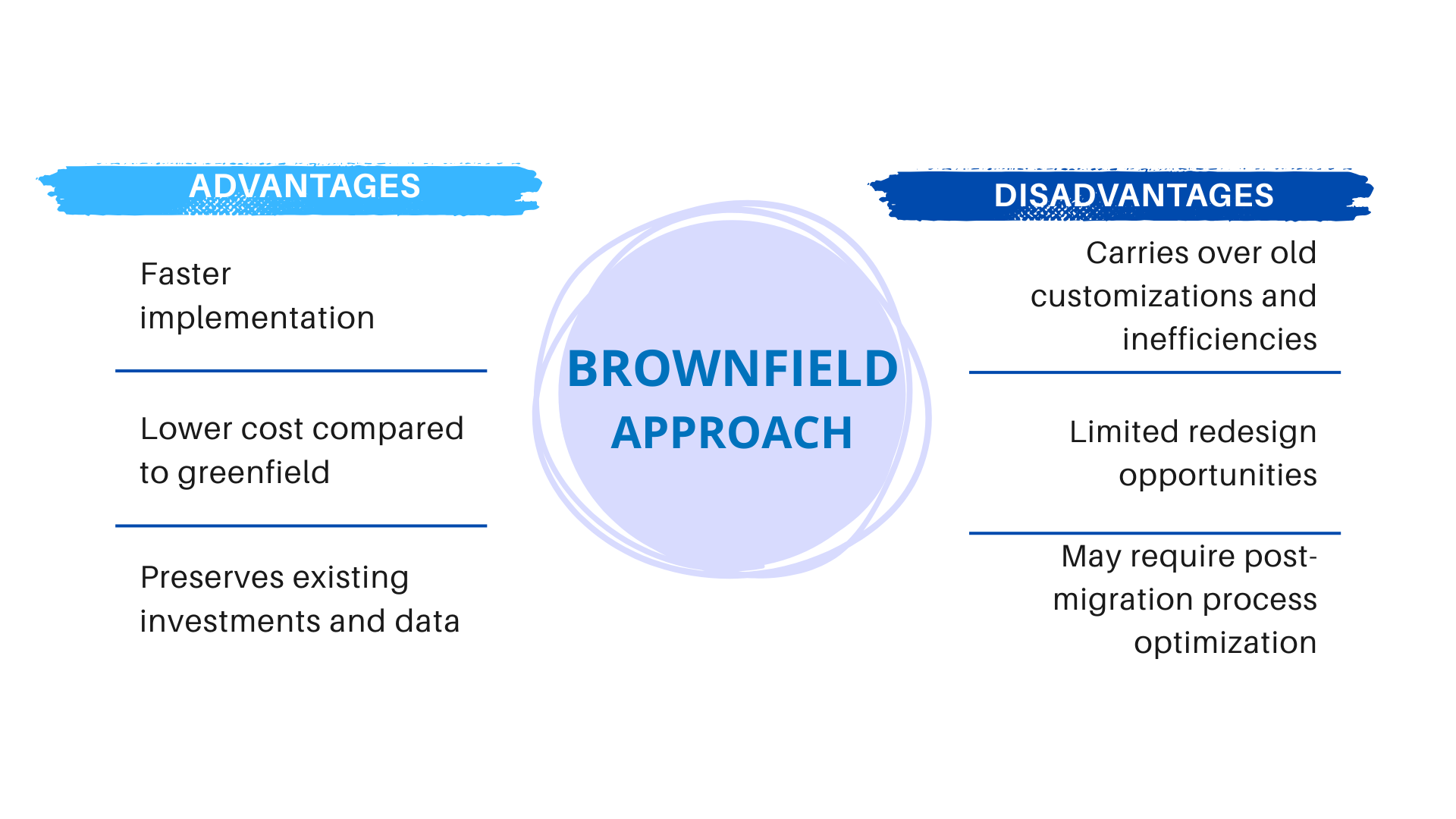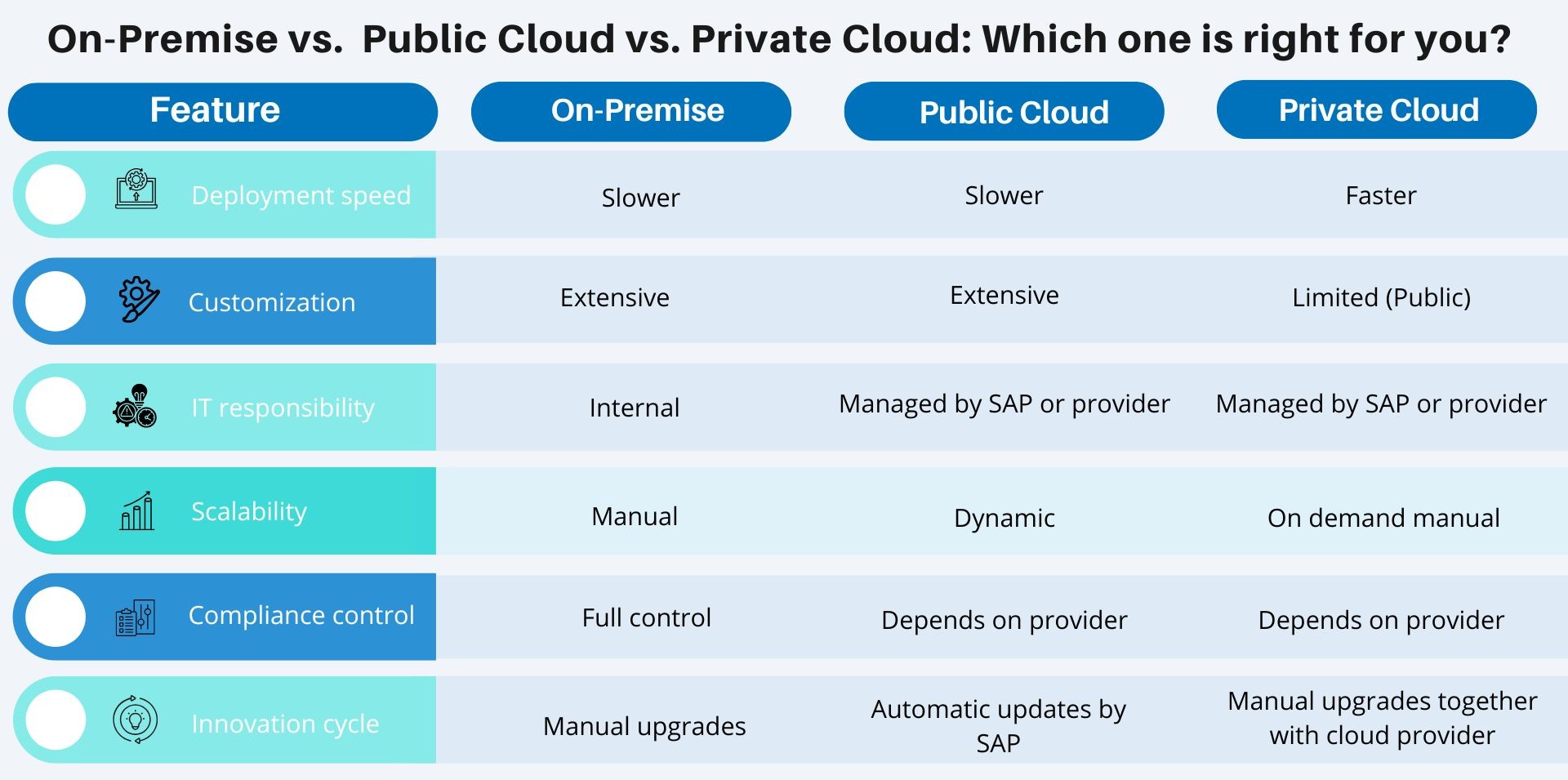Alexey Amelchenko, Head of SAP Practice at ACBAltica
SAP ERP has helped businesses manage key processes like finance, supply chain, and HR for years. But with growing data volumes and higher user expectations, older ERP systems can start to perform slowly, become complex, and harder to maintain. That’s why SAP created S/4HANA — a modern ERP solution designed to make operations simpler, faster, and more flexible.
This article will explain how to choose the right migration path from your current ERP system, such as SAP ECC or other legacy solution, to SAP S/4HANA, whether that’s Cloud or On-Premise, Greenfield or Brownfield.
What is SAP S/4HANA?
SAP S/4HANA is SAP’s next-generation ERP system, launched in 2015 to help businesses simplify and modernize their core operations — including sales, procurement, manufacturing, finance, supply chain, and human resources. Built on the powerful SAP HANA in-memory database, it processes data up to 10,000 times faster than traditional databases, enabling real-time analytics, instant reporting, and smarter decision-making.
The system helps businesses reduce the number of separate tools they rely on by bringing everything into a single, optimized platform. As a result, companies can respond more quickly to market changes, launch new products faster, and operate more efficiently.
S/4HANA also includes a modern SAP Fiori interface for a simple, intuitive experience across desktop and mobile devices. In addition, it connects easily with AI, machine learning, and IoT.
Why transition to SAP S/4HANA?
Many businesses still rely on SAP ECC (SAP ERP Central Component) or other legacy ERP systems that are no longer equipped to keep up with today’s digital requirements — like real-time data access, integration with cloud platforms, support for mobile devices, and the ability to scale quickly as the business grows.
SAP announced the end of support for ECC by 2027 (extended to 2030 for select customers), making the switch to S/4HANA both a strategic and necessary move.
Key benefits of SAP S/4HANA:
- Faster system performance with in-memory computing
With the HANA in-memory database, data is processed much faster than in traditional databases. For example, financial reports that took hours to prepare in legacy systems can now be created in minutes. - Simplified data structures and business processes
Instead of juggling multiple databases, S/4HANA concentrates everything in one place. This reduces manual work, avoids duplication and simplifies tasks such as order processing or inventory management. - Better reporting and real-time analytics
S/4HANA gives managers instant access to operational data to quickly check current sales performance, inventory levels or supplier delays, helping them make faster, more informed decisions. - User-friendly interface with SAP Fiori
S/4HANA uses SAP Fiori across all its applications, offering a user-friendly interface that’s easy to customize and works smoothly on any device. - Easier integration with AI, IoT, and Robotic Process Automation
S/4HANA is built to work with smart technologies — so you can, for example, use AI to forecast demand or use bots to automate routine tasks like invoice processing.
Overview of SAP S/4HANA conversion options
When planning your migration, two main decisions must be made:
- Deployment Type:
- Implementation Approach:
It’s important to note that Brownfield is only available with On-Premise and Private Cloud deployments. If you choose the Public Cloud option, the Greenfield approach is required, because the Public Cloud doesn’t allow you to carry over your existing system setup or custom changes.
Let’s dive into each in more detail.
SAP S/4HANA On-Premise: What you need to know
SAP S/4HANA On-Premise gives businesses full control over their ERP system by hosting it locally on their own servers. This option is ideal for organizations with strict data security requirements or highly customized processes that need more flexibility than cloud solutions typically offer.
When moving to an on-premise system, one of the most important decisions you’ll face is choosing between a Greenfield or Brownfield deployment options.
Types of On-Premise Deployments
Greenfield Implementation
A greenfield approach is a brand-new implementation of SAP S/4HANA from the ground up. It lets you start fresh by building new business processes and data structures, without bringing over old system issues.
When to choose:
Using an outdated or heavily customized ERP system: For example, if your current system is SAP ECC with lots of custom code and manual workarounds, upgrading might be too messy. Starting fresh with S/4HANA can be more efficient.You're moving from a non-SAP system: If your business uses a non-SAP ERP or custom solution, starting with Greenfield may be the easiest way to migrate to SAP S/4HANA and maximize its capabilities.
Need to standardize processes across locations or departments: If different teams use varying workflows or systems, moving to S/4HANA with a fresh setup can help create consistent processes across the company.
Open to starting from scratch for long-term benefits: If your company is undergoing major changes — like a merger, business model shift, or digital transformation — it is a good idea to rebuild your ERP system to support future growth and innovation.

Brownfield Implementation
A brownfield approach involves converting your existing SAP ERP system (e.g., ECC) to S/4HANA while keeping your existing settings and past data.
When to choose:
Existing processes are well-optimized: For example, if your sales, finance, and supply chain processes already run smoothly, there's no need to rebuild everything from scratch.Limited time or budget: If you want to move to S/4HANA quickly and don’t want to spend a lot on redesigning processes, Brownfield is a good fit.
You want a safer transition: This option lets you keep your existing data and settings, so your team doesn’t have to learn everything from the ground up.

SAP S/4HANA Cloud: A flexible, scalable option
Types of Cloud Deployments
Public Cloud
In contrast to the On-Premise solution, SAP S/4HANA Public Cloud is a ready-to-use version of SAP’s ERP system that operates entirely in the cloud and is managed by SAP. It’s quick to set up and consistently updated with the latest features, making it an ideal solution for smaller or midsize businesses. This option is particularly suited for companies with standard business processes that want a fast return on investment (ROI) and a lower total cost of ownership.
Private Cloud
SAP S/4HANA Private Cloud offers more control and customization capabilities than the public version, but is still hosted on SAP servers or reliable cloud providers such as AWS or Azure. This option is ideal for large enterprises that need specific configurations and want to move infrastructure management to the cloud, while retaining the flexibility to customize the system to their needs.
Advantages of SAP S/4HANA Cloud:
- Lower capital expenditure,
- Faster deployment and updates,
- Scalability and flexibility,
- Reduced IT maintenance burden.
Disdvantages of SAP S/4HANA Cloud:
- Limited customization in public cloud,
- Shared infrastructure may raise data concerns,
- Subscription-based pricing can become costly over time.
On-Premise vs. Cloud: Which one is right for you?

Greenfield vs. Brownfield: What to choose?

Making the Final Decision: Key factors to consider
Before making a final decision on the conversion option, weigh the following factors:
- Business size and complexity:
If your business operates in many countries with different legal and reporting requirements (like a global manufacturing or finance company), you might need the full control and flexibility offered by on-premise or private cloud setup. - Budget:
If you’re a mid-sized business looking to keep upfront costs low, the public cloud is often more affordable because there’s no need to buy or maintain your own servers. However, larger companies may save more over time by investing in on-premise infrastructure. - Customization needs:
If your business has specific processes that don’t fit standard ERP templates — for example, a company with a highly unique supply chain or production method — you’ll benefit from the customization possible in on-premise or private cloud versions. - Scalability and flexibility:
If you're planning for fast growth or expansion to new markets, the cloud is best for scaling quickly without requiring extra hardware or IT departments. - Security and compliance:
Industries with strict regulations, like banking, healthcare or government, may need more control over where their data is stored and how it is protected. In such cases, on-premise or private cloud solutions are better, as they provide more direct control over data processing.
Which SAP S/4HANA migration option is right for you?
There’s no one-size-fits-all answer when it comes to SAP S/4HANA migration. Whether you go on-premise or cloud, greenfield or brownfield, the right choice depends on your organization’s structure, goals, and readiness for change.
Start by analyzing your current situation, future business needs, and available resources. With careful planning and the right strategy, switching to SAP S/4HANA can be the path to more efficient operations and steady growth.
Need help choosing the best path forward? Our consultants are here to guide you through your SAP transformation and if you’re wondering about costs, use our free ERP Cost Calculator to get a quick estimate.


